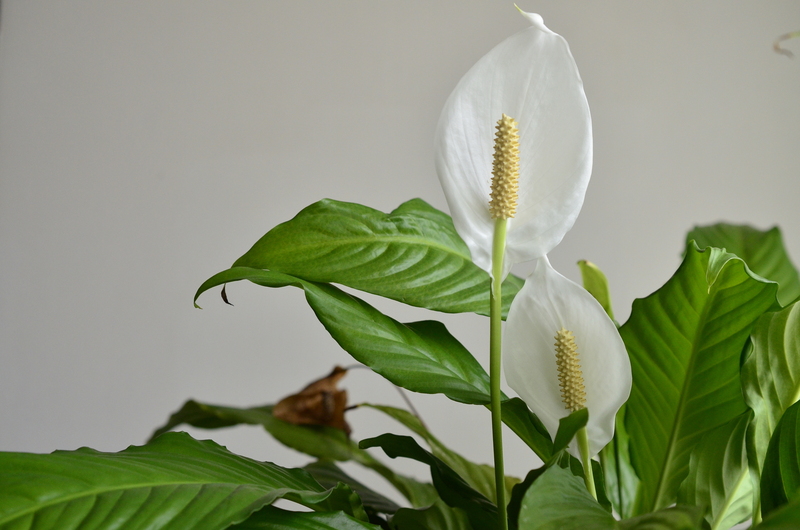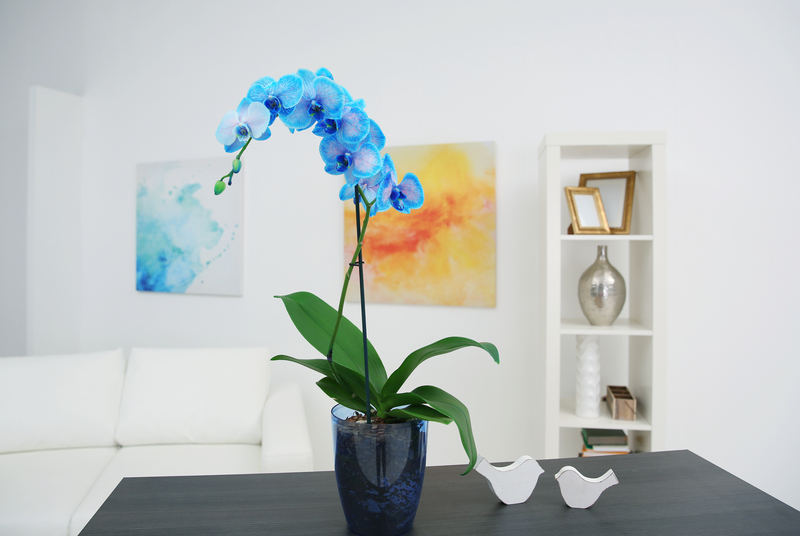Bring Life to Your Balcony or Courtyard with These Small Evergreen Trees
Imagine a tranquil outdoor oasis right outside your window--a lush, green retreat that offers beauty year-round, privacy from neighbors, and a refreshing closeness to nature. For city dwellers and those with limited space, balconies and small courtyards don't have to feel stark or uninspired. The secret to enhancing these urban spaces? Introducing small evergreen trees!
Whether you have a compact apartment balcony or a petite courtyard, the right choice of small evergreen varieties will provide lasting color, structure, and life--no matter the season. In this comprehensive guide, we'll explore the best small evergreen trees for patios and balconies, offer expert planting and care tips, and inspire you with creative ideas on transforming your outdoor space.
Why Choose Small Evergreen Trees for Your Balcony or Courtyard?
- Year-round visual interest: Evergreens retain their foliage throughout the winter, keeping your balcony vibrant even when deciduous plants have shed their leaves.
- Privacy and screening: Many small evergreen trees can form attractive natural screens, giving you privacy in high-density living environments.
- Low maintenance: Dwarf and slow-growing varieties are perfect for pots and require less pruning.
- Improved air quality and well-being: Greenery not only beautifies but also purifies the air and contributes to mental wellness.
- Wildlife attraction: Evergreens can attract songbirds, pollinators, and helpful insects, adding an element of nature to your space.
Let's explore the best options for small garden balconies and courtyards!

Top Small Evergreen Trees for Balconies and Courtyards
1. Dwarf Conifers: Versatile and Compact
Conifers are classic evergreens, and their dwarf varieties are true stars on a patio or terrace. With their slow growth and compact shapes, these evergreen conifers are perfect for containers.
- Dwarf Alberta Spruce (Picea glauca 'Conica'): This charming spruce grows in a tight, conical shape, rarely reaching more than 4-5 feet in a pot. Its soft, bright green needles add visual appeal all year. It thrives in sunny positions and requires little pruning--just regular watering and occasional feeding.
- Mugo Pine (Pinus mugo): Mugo pine's dense, bushy habit and dark green needles create a bold presence even in small spaces. Dwarf forms grow slowly and respond well to light shaping, staying compact for many years.
- Japanese Cedar 'Globosa Nana' (Cryptomeria japonica): With a unique rounded form and fluffy, blue-green foliage, this tree is a stunning highlight in a container garden. It tolerates partial shade and offers year-round texture.
2. Fragrant Evergreen Trees: Adding Scent and Freshness
Why not choose small evergreens that delight the senses? Some varieties offer more than just good looks--infusing your balcony with delightful aromas:
- Bay Laurel (Laurus nobilis): Best known as the classic culinary herb, bay laurel also doubles as an attractive, glossy-leafed evergreen tree. It's happy in containers and responds well to trimming--which means you can keep it as a shrub or let it grow into a taller tree. Loves sun and occasional feeding.
- Star Jasmine (Trachelospermum jasminoides): Though not a true tree, trained star jasmine on a small frame or pillar can work beautifully as a potted evergreen standard. Its glossy leaves and showy, sweetly scented flowers are a real treat.
3. Mediterranean Flair: Olive and Myrtle Trees
Craving that sunny, Mediterranean vibe? Choose small evergreen trees like:
- Olive (Olea europaea 'Little Ollie' or 'Bambino'): Compact olive cultivars give you that silvery-green foliage associated with sunlit courtyards. They're drought-tolerant once established and easy to shape. Grow in a large pot with free-draining soil and plenty of sun.
- Myrtle (Myrtus communis): With its aromatic leaves and pretty white flowers in summer, myrtle is a classic choice for adding Old World charm. Trim regularly to keep compact.
4. Evergreen Topiary: Artistic Structure and Greenery
Topiary never goes out of fashion! Several evergreens lend themselves well to clipping into formal shapes or intriguing living sculptures:
- Boxwood (Buxus sempervirens): The best-known topiary plant, boxwood can be shaped into balls, cones, or spirals. Its small, glossy leaves stay green even in winter, and dwarf varieties work excellently in limited space.
- Japanese Holly (Ilex crenata): A great alternative to boxwood, especially in areas afflicted by box blight. Its foliage is similarly small and neat.
- Bay Laurel: As mentioned earlier, bay trees make striking standards or lollipops for an architectural touch.
5. Bamboo: For a Modern, Evergreen Privacy Screen
Some bamboos are clump-forming, non-invasive, and make outstanding living screens on balconies and urban patios:
- Fargesia robusta: A clumping bamboo ideal for containers, providing lush privacy with its graceful, narrow leaves.
- Fargesia 'Jiuzhaigou': Its upright, colorful canes and compact size create a modern, airy look.
*Be sure to pick clump-forming bamboo varieties rather than running types, to prevent overgrowth.*
How to Grow Small Evergreen Trees in Containers
Growing evergreen trees in pots requires some planning, but it's very rewarding. Here's how to set your plants up for success:
1. Selecting the Right Container
- Choose a pot that is large enough for your tree's root ball, with room for future growth. As a rule, containers should be at least 18-24 inches across and deep.
- Ensure the pot has good drainage holes to prevent waterlogging.
- Consider the look--ceramic, terracotta or lightweight resin planters provide both function and style.
2. Best Soil and Drainage
- Use a high-quality, peat-free potting mix designed for shrubs or trees.
- Add 10-20% horticultural grit, sand, or perlite to improve drainage if needed.
- For acid-loving evergreens like Japanese cedar, use ericaceous compost.
3. Planting Steps
- Place a layer of gravel at the bottom of the pot for drainage.
- Position your tree at the correct height, filling in around the rootball with the soil mix.
- Firm the soil gently and water well.
4. Container Care and Watering
- Water regularly--potted trees dry out faster than in-ground ones. In hot weather, check daily.
- Feed in spring with a slow-release fertilizer suitable for evergreens.
- Mulch the soil surface to conserve moisture and suppress weeds.
- If your balcony is exposed, protect trees from winter wind with burlap or fleece if needed.
5. Pruning and Shaping
- Most small evergreen trees need only light trimming to maintain their shape.
- For topiary or formal shapes, trim in summer with clean, sharp shears.
- Avoid heavy pruning late in fall, which can encourage soft growth susceptible to frost.
Creative Ideas: Arranging Small Evergreen Trees on Your Balcony or Courtyard
Your green space should be a reflection of your style and needs. Here are some tips for arranging container-grown evergreens:
- Clusters of varied heights: Mix taller small trees with lower-growing varieties or companion plants for a tiered effect.
- Symmetry and repetition: Place matching trees on either side of an entrance or pathway.
- Evergreen screens: Use a row of bamboos or narrow conifers to create privacy from neighboring windows or balconies.
- Feature tree: Make a single beautiful evergreen the focal point--perhaps a spiral boxwood or artfully pruned bay.
- Seasonal interest: Underplant with bulbs, trailing ivy, or winter pansies for changes throughout the year.

Frequently Asked Questions: Small Evergreen Trees for Container Gardens
How often should I water my potted evergreen trees?
Water when the top inch of soil feels dry--in summer, this may be as often as every two to three days, while in winter, watering should be reduced. Be careful not to let pots sit in soggy conditions.
Can I keep small evergreen trees alive on a shaded balcony?
Many small evergreens, such as Japanese holly, yew, laurel, or some ferns, tolerate semi-shade. However, most conifers and Mediterranean plants prefer several hours of direct sun.
Do potted evergreens need to be repotted?
Yes, every 2-3 years, gently lift the tree and trim back roots if needed, or move to a slightly larger pot. Refresh the compost to keep the roots healthy.
How do I prevent my potted evergreens from getting root-bound?
Repot regularly, trim the roots when necessary, and always provide a container with enough room to support future growth.
Will small evergreen trees survive winter on an open balcony?
Most hardy varieties will survive, but young trees or Mediterranean types may need protection in extreme cold. Move pots close to a wall or use insulating wraps if harsh weather is forecast.
Conclusion: Transform Your Urban Space with Small Evergreen Trees
Adding small evergreen trees to your balcony or courtyard instantly brings vibrancy, life, and character to even the tiniest city spaces. With the right varieties and care, you can enjoy lush greenery, privacy, and a touch of nature's beauty year-round. Mix and match favorites like dwarf conifers, fragrant bay laurel, olives, myrtle, and bamboos to tailor your garden retreat to your taste and climate.
Don't let limited square footage hold back your gardening dreams. With the resilience of evergreen trees for pots, your balcony or courtyard can become a peaceful haven--just steps from your living room.
Start small, choose wisely, and watch your outdoor sanctuary thrive!
Looking for More Inspiration?
- Read our guides on drought-tolerant balcony plants
- Explore creative container gardening ideas for every season
- Check our list of shade-loving small trees for tricky spaces
Bring life to your balcony or courtyard with small evergreen trees, and enjoy year-round beauty right outside your door!